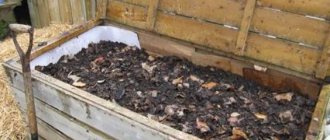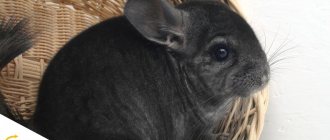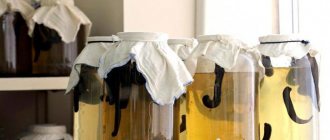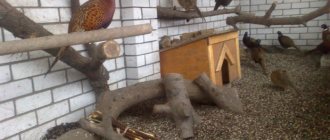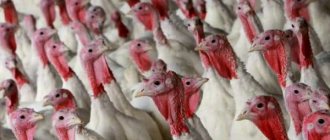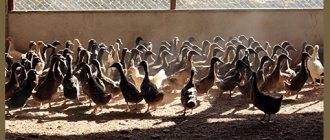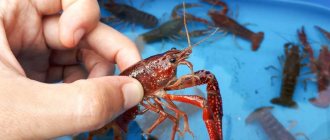* The calculations use average data for Russia
635,500 ₽ Starting investment
920,000 ₽ Revenue (per year)
549,000 ₽ Net profit
18 months Payback period
How much can a small California rabbit farm bring in? An example of a ready-made business plan for a rabbit farm aimed at selling rabbit meat and rabbit skins.
Market situation
The meat market in Russia shows mixed dynamics. This is due to turbulence in the global economy and corresponding processes in the Russian market. The increase in production volumes continues: in total, 4.8% more products were produced in 2020 than in 2020 (10.2 million tons).
The rabbit meat market has seen a trend toward a steady increase in production since 2014. Consumption volume in 2020 amounted to 5.7 thousand tons (49% more than the previous year). In 2020, consumption fell by 1% to 5.6 thousand tons, but this is not explained by a loss of interest in rabbit meat, but by a general decrease in the purchasing power of the population.
The share of domestic products is 72%. More than 2/3 of total production comes from private household plots and small farms. This meat was most consumed in 2020 in the Central, Volga and Siberian districts.
Description of goods and services
The main product of the farm will be rabbit meat - a nutritious dietary product that has a delicate taste, is easily absorbed by the body and does not cause an allergic reaction. It is also planned to sell rabbit skins, which can be used for the production of clothing, and waste left after slaughter (ears, vermicompost, etc.).
For the highest meat yield, preference is given to the Californian breed of rabbits - a broiler breed, which is capable of gaining up to 45 g daily and quickly reaching a large weight. The rabbit will be slaughtered at 3-4 months, when the weight of the animal reaches 3 kg. Rabbit meat will be sold at a price of 400 rubles/kg. The cost of 1 kg of meat, taking into account feed, vaccination, cage depreciation and taxes, will be about 150 rubles. The skins will be sold at a price of 40 rubles/piece.
To prevent rabbit diseases, and as a consequence - epidemics and mass mortality, rabbits will be regularly vaccinated in accordance with the recommendations of immunologists and industry specialists.
The value of rabbit meat
Rabbit meat has advantages over its analogues that ensure competitiveness - especially if they are skillfully used during promotion:
- Great taste. There are many delicacies made from rabbit meat in the culinary world.
- Increased protein, low cholesterol. Absorbed by 90%, improves metabolism.
- The product is considered dietary. It contains very small amounts of sodium salts.
- The meat contains all amino acids, vitamins and minerals (C, PP, B12, B6, phosphorus, iron, calcium, manganese).
- It contains lecithin, which is useful for the prevention of atherosclerosis.
Rabbit meat helps strengthen bones, normalize blood sugar levels, and comprehensively strengthen the body.
Veterinary standards and guests
The rules for the circulation of meat and semi-finished meat products on the territory of the Russian Federation are prescribed by the Technical Regulations of the Customs Union (TR CU 034/2013). According to the CU TR, the quality of meat products is confirmed by a veterinary certificate. It is issued by the territorial service of Roselkhoznadzor after laboratory control and a veterinary and sanitary conclusion.
The state information system GIS Mercury (Vetis) controls the production and movement of products to the end consumer. This system generates veterinary accompanying documents. A declaration of conformity and a certificate of conformity are required for semi-finished meat products. The rules for preparing these documents are prescribed by TR CU 021/2011
GOST 27747-2016 - Rabbit meat (rabbit carcasses, broiler rabbits and their parts)
How to run a business: private subsidiary or individual entrepreneur?
First you need to choose the form that the rabbit breeding business will take. There are 2 options - personal subsidiary plot (LPH) and individual entrepreneur (IP). Each option has its own characteristics.
Private farming is suitable for those who intend to produce rabbit meat for further sale to friends or at agricultural fairs. An entrepreneur is exempt from paying taxes. Setting up a subsidiary farm is simple: just settle the issues with the local administration (village council), obtain a health certificate and a veterinary service report on the safety of meat.
Business in form provides opportunities for selling rabbits in retail stores and shopping centers. Based on the results of his activities, the businessman will pay tax to the budget. You will need to obtain certificates from the rabbit farm and phytosanitary service, confirm compliance with GOST and be accountable to Rosselkhoznadzor.
How to feed rabbits
Feeding rabbits
Of all farm animals, rabbits are perhaps the most whimsical. These are herbivores, so succulent grass is their favorite food. But don't give them grass you know nothing about. You should not give rabbits a large amount of freshly cut grass, otherwise, bloating is guaranteed. You can give rabbits branches of garden shrubs such as raspberries, as well as leafy branches of birch and willow, oak and elm. Animals will chew on them, not the walls in the cages. Rabbits eat vegetables from the garden well: carrots, zucchini, pumpkin, cucumbers, tomatoes, beets, peelings and tops.
It is extremely important to feed your rabbits food rich in fibre, such as hay. But straw should not be given to animals for food. In winter, rabbits can be fed crushed grains, grains, oats, mixed feed and feed additives for rabbits. As minerals, you can add salt, flour and chalk to food from 0.5 g to 2 g per animal. There should always be fresh, clean water in drinking bowls.
Expert recommendations on how to properly feed rabbits can be read here.
The best rabbit breeds for breeding
There are several types of rabbits that are suitable for a home mini-farm.
- New Zealand breed:
- Red. Individuals grow quickly, especially at an early age. Adults weigh about 5 kg.
- White. Rabbits also gain weight and fleshiness quickly. After only 3 months they reach a weight of 3-3.5 kg.
- California rabbit. Animals provide a lot of meat. During the first 2 months they increase by 45 grams. meat daily, after 5 months they weigh about 4.5 kg.
You should not buy downy and meat-skinned breeds - they are intended for other purposes and grow more slowly. When purchasing, carefully study the suppliers’ documentation, the characteristics of the breed, and evaluate the animals. The best place to buy rabbits is at agricultural shows.
Difficulties of keeping rabbits
There are a number of difficulties in rabbit breeding that can fall on novice rabbit breeders out of the blue. You need to be prepared for the following difficulties. Nutrition problems. They occur infrequently if you adhere to the right diet. But rabbits are sensitive to rot and mold and can get sick. If the food is too dry, they may choke. It is necessary to regularly add vitamins to the diet of rabbits.
Vaccines. Rabbits need to be vaccinated from time to time. If the room is often ventilated and cleaned, then you don’t have to worry about the occurrence of diseases in the animals. But it’s better to play it safe and vaccinate your animals against myxomatosis, pasteurellosis, and VGBV.
Problems with cage keeping. Animals love to chew on everything, so you need to take care of high-quality materials for cages.
Content temperature. Rabbits easily adapt to temperature conditions, but require more comfortable living conditions than, for example, poultry or nutria. Acceptable temperature for life is from +2 degrees to +30 degrees Celsius. Temperatures from 13 degrees to 26 degrees Celsius are suitable exclusively for reproduction and good weight gain.
Basic expenses for starting a farm
A business project for raising rabbits involves creating a livestock of up to 1000 individuals and developing a plot of land to support the life of the animals.
Table 1. Basic costs for breeding rabbits.
| Article title | Cost, rub. |
| Paperwork | 5 thousand |
| Land plot for rent, 1000 sq. m | 2 thousand |
| Construction of buildings and pits | 100 thousand |
| Construction of sheds, 3 pcs. | 70 thousand |
| Purchase of cells, 60 pcs. | 100 thousand |
| Purchase of rabbits, 60 individuals | 30 thousand |
| Feed, for a year | 120 thousand |
| Feeders, drinking bowls, slaughterhouse equipment, etc. | 50 thousand |
| Refrigeration and oven equipment | 70 thousand |
| Salary | 40 thousand |
| Additional expenses | 100 thousand |
| Total | 700 thousand |
Description of the industry and company
The history of rabbit breeding as an industry in our country began in 1927, when, by order of the USSR government, about 15 thousand purebred rabbits from Europe were brought to the Western republics. By 1961, the USSR had become one of the world leaders in rabbit breeding: 56.7 million rabbit skins and 41.2 thousand tons of live weight were harvested. 95% of the country's production came from the previously popular domestic rabbit breeding, and about 400 farms provided the population with breeding breeds. The collapse of the USSR led to the almost complete disappearance of rabbit breeding as an industry. Most enterprises closed, and it became unprofitable to raise rabbits on an industrial scale.
Nowadays, rabbit breeding is gradually being revived, and the volume of production is gradually increasing. According to the expert-analytical center “AB-Center”, the volume of rabbit meat production over five years increased by 21.5% and amounted to 17.5 thousand tons, of which the largest share is occupied by households, which account for 13.5 thousand tons products. The highest growth rates are demonstrated by the commodity sector, whose volumes have grown by 60% over five years. Accordingly, the livestock is also growing. According to Rosstat, the number of rabbits in Russia has more than doubled since the beginning of the 2000s and exceeded the figures of the 1990s.
The majority of the rabbit population, as of the end of 2020, falls on household farms - 82.8%. The share of agricultural organizations is 11.3%, individual entrepreneurs and peasant farms own 5.79% of the livestock.
Industry experts emphasize that the domestic rabbit breeding market is in its formation stage and demand will grow for a long time. Unmet demand, according to rough estimates, exceeds 320 thousand tons. If we take today’s production volumes, it turns out that each Russian consumes only 119 grams of rabbit meat per year, while Europeans eat 2 kg of rabbit meat per year.
After the collapse of the USSR, most of the products began to come from abroad. However, the share of imports began to decline every year. If in 2006 it was 97.2%, then in 2010 it was 72.2%. In 2020, after the devaluation of the ruble and the introduction of sanctions, the share of imports is estimated at approximately 9%. This situation aroused the interest of large businesses - in the near future, several large players are expected to appear on the Russian market who will be able to fill the unsatisfied demand that has arisen after products from Hungary and China disappeared from the shelves.
Despite the increase in the share of large players, the market is far from saturation, so the business of medium- and small-sized farms will remain a relevant area of entrepreneurship for a long time. Unlike large companies, they work for local demand: they are not allowed to enter large retail chains due to the low volumes of products produced. In addition, the main method used for keeping rabbits is open keeping with the help of sheds, while large enterprises use closed keeping, automatic systems for maintaining the microclimate, supplying water and feed, and removing manure.
The farm planned for opening will work using the most common shad technology today, the use of which is justified by the small planned production volume and low cost of creation. The farm will be opened in the countryside, on its own land plot of 1000 square meters. meters. The area of the sheds will be 360 square meters. meters (3 sheds) and will allow you to get up to 1000 heads of young animals per year (up to 1000 skins and about 2000 kg of meat).
The business will be registered as an individual entrepreneur. For breeding, 100 breeding young animals will be purchased. Since the main source of income for the farm will be meat, preference is given to the Californian beef breed. This breed is characterized by high productivity, survival of young animals and unpretentiousness.
The meat is planned to be sold to owners of outlets at meat markets. The average price per carcass will be 400 rubles, which is the average price on the market today. An additional source of income will be the sale of rabbit skins at 40 rubles per carcass. It is also possible to sell the waste remaining after the slaughter of rabbits (rabbit ears, vermicompost, etc.).
The starting investment in opening a farm will be 636.5 thousand rubles. Source: own funds. Start-up cost items will include costs for creating shads, purchasing breeding stock, etc. More detailed items of starting costs are given in Table. 1 business plan.
Table 1. Investment costs of the project
| № | NAME | AMOUNT, rub. |
| Creating shades | ||
| 1 | Creation of sheds (building materials, site arrangement) | 242 000 |
| Equipment | ||
| 2 | Equipment for utility rooms | 100 000 |
| 3 | Feed production equipment | 82 500 |
| 4 | Refrigeration equipment | 52 000 |
| 5 | Other equipment | 50 000 |
| Intangible assets | ||
| 6 | Registration, advertising | 30 000 |
| Working capital | ||
| 7 | Working capital | 30 000 |
| 8 | Purchase of young animals | 50 000 |
| Total: | 636 500 | |
The main work to ensure the operation of the farm and all production responsibilities will fall on the shoulders of the project initiator. Supporting functions will be performed by family members of the initiator. To open a farm, a preparatory period of 3 months will be required, which is necessary for the construction of shads, the purchase of breeding stock, and the purchase of some equipment. An agreement has been reached on the sale of products, a drawing of the shed structure is available, the site has been prepared, and the necessary building material has been purchased.
Complex of buildings
The farm requires the purchase or lease of a country plot of land in accordance with accepted sanitary and environmental standards:
- no closer than 5 km from cities and industrial production;
- no closer than 2 km to rivers and reservoirs.
According to the terms of our business plan, about 1000 sq. m. will be required. m of area for 800-1000 individuals.
Table 2. Farm plan.
| Name | Area, sq. m |
| Sheds, 3 pcs. | 400 |
| Feed shop with entrances | 250 |
| Inventory storage warehouses | 100 |
| Slaughterhouse, freezing zone | 70-100 |
| Waste collection pit (manure collector) | 30-50 |
All buildings must be interconnected by passages and driveways, including for large equipment (trucks, tractors).
Remember that high humidity is unacceptable for rabbits. Therefore, it is better to build a farm on a hill.
Sheds
The shed system for keeping rabbits is considered optimal. It facilitates maintenance and allows you to use space with maximum efficiency.
Cages for storing animals are placed inside the shads, measuring at least 1 m in length, 0.5 m in height, 1 m in depth. Most often they are made from galvanized welded mesh with cells of a suitable diameter.
The cages are divided into 2 compartments - for the growth of the individual and its feeding. Feeders and drinking bowls are also installed inside. Indoors, the cages are placed in several rows. The lower one is located at a height of at least 60 cm from the floor.
The shed itself measures 20 m long, 2.2 m wide, 2.4 m high. It holds 60-70 cells.
The premises should be well insulated, provided with lighting and ventilation.
Feed shop and warehouses
Supplies of food for rabbits are stored here - compound feed, grain, hay - which should be enough for at least 2 months in advance. The rabbit must eat on time to grow, so it is recommended to replenish supplies in a timely manner.
In the room it is necessary to provide the conditions necessary for storing feed: hydro- and thermally insulate, maintain a stable temperature, prevent the appearance of rodents, mold, and the development of pathogenic bacteria.
In the feed shop you can install equipment for the production of compound feed. It will reduce your monthly food purchase costs.
Spare feeders, drinkers, building materials and other equipment should be stored in an appropriate room and always available - so that the problem can be eliminated as quickly as possible.
Slaughterhouse, freezers and manure collector
The slaughter and cutting of rabbits is carried out in a special place, which must be equipped with a blood supply and an oven for the destruction of offal. We are talking about illiquid skins, entrails, heads, paws.
The meat is packaged and sent to the freezer. Refrigeration equipment is placed nearby in which products ready for sale will be stored. This arrangement will allow for an uninterrupted production process.
The manure collector is a 3 m deep hole dug in the ground. It should be located at a distance from other premises. The walls should be concrete; it is recommended to make a canopy on top so that moisture can get inside.
Profit
Profitability calculation
Profitability is a complex indicator characterizing economic efficiency. It is calculated as the ratio of book profit to the value of assets multiplied by one hundred percent.
The average profitability of rabbit farming is 60-70%. The profitability of rabbit breeding for some breeders who use almost waste-free production - selling skins, fur products and litter - reaches 85%!
Payback
On average, with proper planning of activities, you can get up to half a million rubles in net benefits in the first year alone. Gradually, income will only grow, and expenses will decrease. A large farm for two million rubles can be repaid in 14-15 months, a small “dacha” business in two years.
A business plan for a rabbit farm with calculations can be prepared using special calculators for doing business.
Is business profitable?
The answer to the question of whether it is profitable to keep rabbits is an unequivocal “yes”. In this case, a lot depends on your strategic mind, business experience, luck and even the choice of animal breed. Moreover, the larger the farm, the higher the chance of winning.
If you “put on stream” the production of semi-finished meat products and the sale of dressed skins, you can increase your benefits many times over, recouping your costs in a matter of months. To do this, you need to invite experienced specialists or develop the required skills yourself if your business belongs to the category of “family for neighbors”.
Development prospects
The prospects for the development of rabbit breeding for any farmer are very high.
Best development options:
- transition to higher levels - city, regional and even state levels (under the conditions of import substitution policy, such an outcome is quite likely);
- produce new types of products - frozen minced meat, semi-finished products, ready meals;
- tanning skins and increasing the quality of sewn clothes.
If you open a farm in some regions, you can receive large subsidies and assistance from the state, including the opportunity to get money for the development or provision of distribution channels for products.
Rabbit breeding and feeding
Females are capable of mating up to 4 times a year. One female rabbit gives birth to 6 to 8 rabbits. The suckling period takes at least 60 days.
From the livestock, breeding female rabbits and breeding males are distinguished. They are placed in separate cages on the middle tier of the shad. If there are 15 females in it, they will be able to give birth to more than 360 rabbits in a year. In 3 shad there are more than 1000 individuals.
Rapid reproduction is also possible with proper feeding of animals. It is considered optimal to use feed that provides maximum nutritional value. It is also necessary to give vitamin and mineral supplements, high-quality hay, and well-cured grass.
Proper feeding of rabbits is a whole science. The materials on this case need to be studied separately.
Shed system for keeping rabbits
Shed system for keeping rabbits
In addition to the usual outdoor system for keeping baby rabbits, you can use the so-called shad method. This makes it easier to care for rabbits, and also allows you to mechanize the work of delivering water and feed to the cages. Thanks to this, labor productivity doubles. With this method of keeping rabbits, a rabbit breeder can simultaneously serve 130 females and 1,200 rabbits that have not yet been separated.
The length of the shad reaches 120 cm, there are up to 270 cells. The floor between the aisles is concreted and has a slope on both sides. The width of the passage between the cages should reach 130 cm. The cages are equipped with a mesh or slatted structure with wooden pallets. Watering animals is mechanized. In sheds, the length of the cages should reach 140 cm, the depth - 70 cm, the height of the back wall - 36 cm, the height of the front wall - up to 55 cm. The cages should be placed in two tiers in two rows. The bottom row should contain individuals from the main row, and the top row should contain young rabbits. To fatten young animals for meat, you need to use double-sided shads; the distribution of feed and water and manure removal are mechanized. In such sheds you can keep up to 600 heads of young animals. The cages are a wooden frame trimmed with metal mesh. Rabbits can be watered using automated float drinkers. When creating a farm project with a meat and skin direction, for at least 1200 queen rabbits, it is planned to keep them in two-tier sheds. Such shads must be blind on one side.
We have an article on our website dedicated to keeping rabbits in sheds in which you will find all your answers to questions.
Staff
A rabbit breeding farm requires the constant work of an entire production team:
- Operator worker, 1 person. They are engaged in servicing the rabbit population, monitoring the vital activity and health of individuals.
- Worker for slaughtering rabbits and packing meat, 1 person. Kills animals (possibly using electric current), cuts up products, packages them, packs them, puts them in refrigerators. The remaining 2 positions can be outsourced.
- Veterinarian. Manages the organization and implementation of all sanitary and veterinary measures, advises workers.
- Engineer. Monitors the serviceability of equipment and carries out repairs.
You may also need the services of an electrician, a cleaner, an accountant, or a driver for delivering meat.
Feeders and drinkers
Inside the cage, equipment should be placed in such a way that the animal can easily reach it. Feeders for animals such as breeding rabbits are made from easy-to-care material. Wood and plastic are usually not used for this purpose. Thin sheet metal is considered the best option. Before installing such a feeder in a cage, however, be sure to ensure that it does not have sharp edges. Otherwise, the rabbit may injure its paws or, much worse, its nose. Hopper feeders can be made of slate, plexiglass and other similar materials. They are usually placed on the cage door. Two holes should be made in the bottom of each feeder to drain liquid.
Small mangers for hay (in the shape of a V) are usually installed between adjacent cells. It is best to make them from a mesh with a large mesh. Both skin and meat rabbits have very narrow muzzles, and therefore food is easily obtained from such nurseries. In this case, there will be no loss of hay as a result of trampling.
You can use nipple drinkers for rabbits. In this case, they are installed outside the cells. Conventional drinking bowls should be placed at a height of approximately 7-10 cm from the floor level. Otherwise, the rabbits will start defecating in them.
Sales of products
Industrial production of rabbit meat in Russia is still at the formation stage. However, the demand for meat is high and remains largely unsatisfied. Experts predict an increase in rabbit meat consumption by approximately 1-2% per year.
The manufacturer has several sales channels for the product.
Firstly, forming your own client base. We are talking about the farmer’s own acquaintances, his family’s acquaintances, and so on. Word of mouth is important, especially if you offer meat inexpensively.
You also need to place advertisements in newspapers and on the street. This way an entrepreneur can create his own base of regular customers.
The second channel is sales through stores. We are talking about retail stores and small chains. You can sell meat to restaurants.
Where can I find someone who buys live weight rabbits?
It is very easy to find buyers of rabbits by live weight - there are dozens of such offers on the Internet, you just need to type, for example, “ We buy live rabbits in bulk ” or “ Sell rabbits by live weight ” in the Yandex or Google search engines. Many announcements of this type and nature are published on specialized portals and websites, for example Agroserver or Ya-Farmer.
If you are interested in any offer, be sure to clarify and double-check where the rabbit buyer is located. Try to find a buyer in your region, but if this is a problem, then focus on a distance of up to 300 kilometers.
In your searches, be careful not to run into scammers and swindlers! Those interested can familiarize themselves with this instructive story.
What is the profitability of the business?
Our business plan for rabbits assumes the cost of opening a small farm is about 700 thousand rubles. Let's calculate income from activities.
The total is: 1000 individuals, subject to regular slaughter, population renewal, and growth of young animals, can produce up to 4 tons of meat per year. The average price of 1 kg is 300 rubles. Annual revenue - 1.2 million rubles. Annual expenses – salary, utilities, feed. It turns out to be approximately 800 thousand rubles. Net profit – 400 thousand rubles.
Thus, the rabbit breeding business will pay for itself in about 2 years, then it will begin to generate a stable income.
Wages for hired workers in rural areas are low, especially since the work requires only a few hours a day. Renting state land is much cheaper than buying it.
Here we do not take into account the profit from the sale of skins - this is more than a hundred thousand rubles a year.
How to calculate profitability and payback
Rabbits in cages
The main advantage of breeding rabbits is their fertility. If all necessary conditions are met, one queen can give birth to about 10 litters in one year. That is, in a year you can get up to 60 animals from one rabbit . So, for example, having 120 rabbits on your farm, you can get 7,200 animals, which represent more than 14,400 kilograms of meat. If you sell meat for 200 rubles per kilogram, you can earn 2,880 thousand rubles in a year. At the same time, 50 percent of the profit will have to be spent on production costs, namely:
- buying food,
- transport costs,
- electricity costs,
- wages for hired workers (if any),
- repair and purchase of cells,
- vaccination and veterinary service.
If you work independently and also vaccinate yourself, costs can be reduced.
Step-by-step plan for starting a business
- Choose a form of activity - private household plot or individual entrepreneur - depending on your plans for selling products.
- Buy a plot of land (or rent it). If you already have one, you need to make sure that it meets the legal requirements for creating a mini-farm.
- Build a building system.
- Erect sheds, install cages in them, create suitable conditions for rabbits in the cold and warm seasons.
- Create a room for compound feed. You can use existing buildings, but you will need to make repairs.
- Designate a room for slaughtering, storage of refrigeration equipment and a warehouse.
- Dig and arrange a manure pit.
- Hire workers.
- Buy feed, prepare supplies.
- Get a population of rabbits and start breeding them.
- Develop a marketing plan.
Organizing your own mini-farm
When organizing a rabbit business, it is necessary to take into account the distance at which the farm is located from any residential buildings. If you build a livestock farm too close, neighbors have the right to complain to regulatory authorities, but you will still need to move the cages and pay a hefty fine.
The farm must be located away from residential buildings
It is recommended to build cages on small hills - this way, during heavy rain or melting snow, water will not accumulate in the cages. Remember - too high humidity is definitely not suitable for rabbits.
It is also necessary to provide a separate dry room for storing feed, because it is profitable to purchase grain and feed in large quantities, and hay and straw should be stored from the moment of mowing until spring.
Hay storage under roof
The place for slaughtering animals must be equipped with a special tray for blood and an oven (it will be possible to destroy waste in it). In addition, it is recommended to install refrigeration equipment for storing meat in the same place.
A pit for storing manure is also prepared separately. Usually it is dug out to 300 centimeters, and the walls are concreted. The top of the pit should be covered with a lid, otherwise moisture will get inside.
It is better to initially place rabbit cages under a canopy.
Prices for cages for rabbits
Rabbit cage
Main business risks
When opening a mini rabbit farm, you need to take into account the risks.
The main risk is high animal mortality. The main danger comes from various viruses and pathogens, leading to mass death of the population. Dangerous diseases are hemorrhagic fever and myxomatosis. The mortality rate from them reaches 90%. The problem of diseases is solved through vaccinations.
The next danger is improper feeding. Rabbits do not know when to stop and can eat too much food that their weak digestive system cannot handle. To avoid rabbits dying from bloating, approach the issue of feeding wisely.
After mowing, the grass should be left to dry and dry for a day. This will allow you to get rid of substances that are toxic to the animal’s body.
A business plan for selling rabbits will help a novice entrepreneur assess the prospects, advantages and risks of this business, as well as calculate approximate profit margins.
Specifics of the rabbit business
pros
Raising animals for meat and fur has a number of advantages. Let's consider the pros and cons of such a business.
Advantages:
- low start-up costs;
- rabbits are fertile, so there is no need to buy young ones;
- minimum list of documents required to open a business;
- low costs of keeping animals;
- high price of meat and skins;
- many ways to sell goods;
- relatively low competition;
- availability of additional income from the sale of tanned skins or finished fur products.
However, rabbits do not live long, and you can always quickly stop your activity if you realize that it is not suitable for you.
Disadvantages and possible difficulties
This enterprise has only one drawback - small rabbits often die from infections, so there is no way to predict the survival rate of young animals. Diseases are called the main difficulties associated with raising rabbits.
The most dangerous diseases are:
- myxomatosis;
- eimeriosis;
- VGBK.
The listed diseases are so dangerous that the state even establishes a quarantine within a radius of 20-30 kilometers in order to protect neighboring areas and settlements from the epidemic. These diseases cannot be cured - all affected rabbits must be destroyed. The only way to reduce the risk is to get vaccinated in a timely manner.
Equipment for slaughter and skinning
Raising rabbits for meat usually lasts until they are 5-6 months old. After this, the animals are slaughtered, since it becomes irrational to keep them any longer. Of course, the quality of the meat of these animals depends not only on the type of feed used, but also on how accurately the slaughter rules are followed. In order for the carcass to be stored for a long time, the blood must be drained from it. Therefore, after slaughter, it is hung on a special strut, the skin is removed (like a stocking) and the internal organs are removed (everything except the liver). The spacer is a metal tube with two tips. It is usually attached to the base using a hook.
Larger farms use different equipment for slaughter. In this case, rabbits are usually killed using an electric stunner. This method is considered the most humane. The carcasses themselves are cut on a special line.
